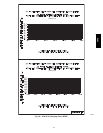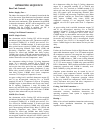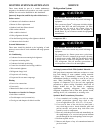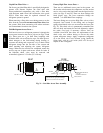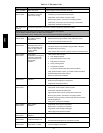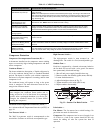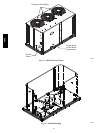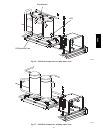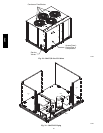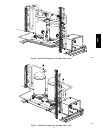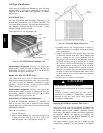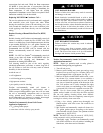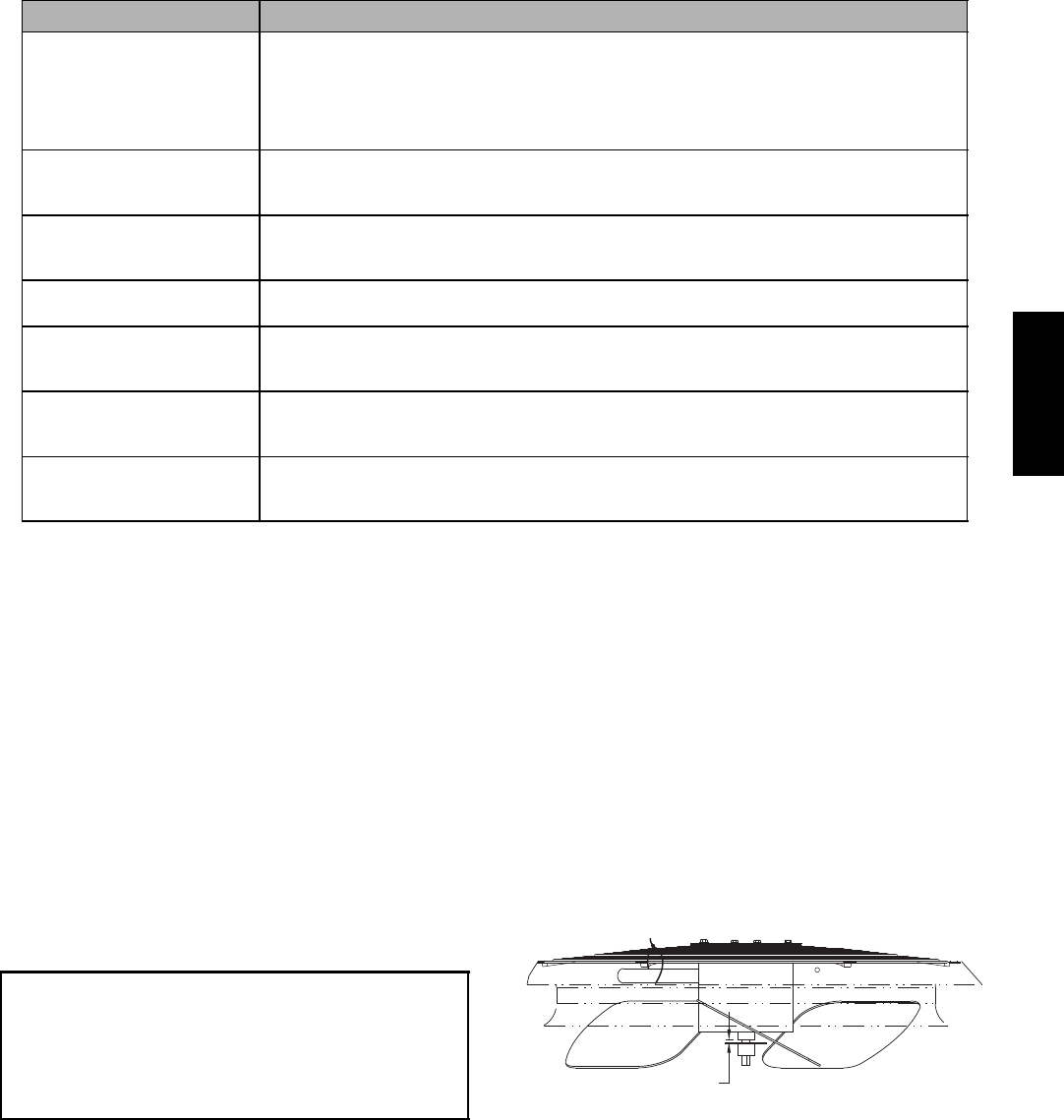
37
Table 12 – CADM Troubleshooting
Miswired Module Indication Recommended Tr oubleshooting Action
Green LED is not on,
module does not power up
Determine if both R and C module terminals are connected. Verify voltage in present at module’s R
and C terminals.
NOTE: The CADM requires a constant nominal 24VAC power supply. The wiring to the module’s R
and C terminals must be directly from the control transformer. The module cannot receive its power
from another device that will interrupt the 24VAC power supply. See the 38AU Wiring Diagram(s)
(Fig. 29 and Fig. 30).
Green LED Intermittent,
module powers up only
when compressor runs
Determine if R and Y terminals are wired in reverse. Verify module’s R and C terminals have a con-
stant source. See “NOTE” above for details on R and C wiring.
TRIP LED is on but system
and compressor check OK
Verify Y terminal is wired properly per the 38AU wiring diagram (see Fig. 29 and Fig. 30). Verify
voltage at contactor coil falls below 0.5VAC when off. Verify 24V AQC is present across Y and C
when thermostat demand signal is present. If not, R and C are reverse wired.
TRIP LED and ALERT LED
flashing together
Verify R and C terminals are supplied with 19-28VAC.
ALERT Flash Code 3
(Compressor Short Cycling)
displayed incorrectly
Verify Y terminal is connected to 24VAC at contactor coil. Verify voltage at contactor coil falls below
0.5V AC when off.
ALERT Flash Code 5 or 6
(Open Circuit, M issing Phase)
displayed incorrectly
Check that compressor T1 and T3 wires are through module’s current sensing holes. Verify Y ter-
minal is c onnected to 24VAC at contactor coil. Verify voltage at contactor coil falls below 0.5VAC
when off.
Alert Flash Code *
(Welded Contactor)
displayed incorrectly
Determine if module’s Y terminal is connected. Verify Y terminal is connected to 24VAC at contactor
coil. Verify 24VAC is present across Y and C when thermostat demand signal is present. If not, R
and C are reverse wired. Verify voltage at contactor coil falls below 0.5VAC when off.
Compressor Protection
Compressor Overtemperature Protection (IP) —
A thermostat installed on the compressor motor winding
reacts to excessively high winding temperatures and shuts
off the compressor.
CrankcaseHeater—
The heater minimizes absorption of liquid refrigerant by
oil in the crankcase during brief or extended shutdown
periods. The heater is wired to cycle with the compressor;
the heater is off when compressor is running, and on when
compressor is off.
The crankcase heater will operate as long as the power
circuit is energized. The main disconnect must be on to
energize the crankcase heater.
IMPORTANT: Never open any switch or disconnect
that energizes the crankcase heater unless unit is
being serviced or is to be shut down for a prolonged
period. After a prolonged shutdown on a service job,
energize the crankcase heater for 24 hours before
starting the compressor.
Advanced Scroll Temperature Protection (ASTP) —
See “Advanced Scroll Temperature Protection (ASTP)” on
page 24.
Low-Pressure Switch —
The 38AU low-pressure switch is stem-mounted on the
suction line. Switches are all fixed, non-adjustable type.
High--Pressure Switch —
The high--pressure switch is stem mounted on the
discharge line. The switch is a fixed, non-adjustable type.
Outdoor Fans —
Each fan is supported by a formed-wire mount bolted to
the fan deck and covered with a wire guard. Fan motors
have permanently lubricated bearings.
1. Shut off unit power supply. Install lockout tag.
2. Remove outdoor fan assembly (grille, motor, and fan).
3. Loosen fan hub setscrews.
4. Adjust fan height as shown in Fig. 33.
5. Tighten setscrews to 84 in--lbs (949 N--cm).
6. Replace outdoor fan assembly.
3.6 mm +0/0/-0.8
C10103
Fig. 33 -- Outdoor Fan Blade Position
Lubrication —
Fan Motors: The fan motors have sealed bearings. No
provisions are made for lubrication.
Compressor: The compressor has its own oil supply. Loss
of oil due to a leak in the system should be the only
reason for adding oil after the system has been in
operation.
38AU



